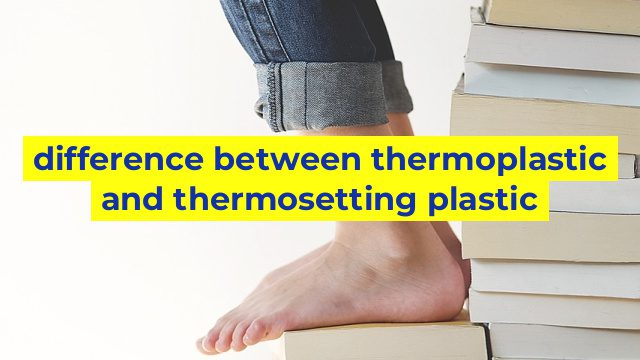What’s the Difference Between Thermoplastic and Thermosetting Plastic?
Introduction
Plastics are a versatile material used in a wide range of industries, including manufacturing, electronics, construction, and packaging. There are two main types of plastics: thermoplastic and thermosetting. Though they may look and feel similar, these two types of plastics have distinct properties and are used for different applications.
What is Thermoplastic?
Thermoplastic is a type of plastic that can be repeatedly melted and remolded without undergoing any significant chemical changes. This process is known as plastic injection molding. These plastics can also be reheated and re-molded into a completely new product.
Thermoplastics are easy to shape and form, making them a popular choice in manufacturing. They also tend to be lightweight, durable, and relatively inexpensive to produce. Common uses of thermoplastics include bags, bottles, automotive parts, medical instruments, and electronics.
What is Thermosetting Plastic?
Thermosetting plastic is a type of plastic that undergoes a chemical reaction during the molding process, which causes it to harden permanently. Once cured, it cannot be reshaped or melted. This makes it ideal for high-performance applications where durability and stability are crucial.
Thermosetting plastics tend to be stronger and more rigid than thermoplastics. They are commonly used in high-heat applications, such as electrical insulation, automotive parts, adhesives, and composite materials.
Differences Between Thermoplastic and Thermosetting Plastic
The main difference between thermoplastic and thermosetting plastic lies in their chemical makeup and properties. While thermoplastics can be melted and reshaped multiple times, thermosetting plastics undergo a chemical reaction that permanently changes their shape and properties.
Moreover, thermoplastics tend to be more flexible and easier to shape, while thermosetting plastics are more rigid and durable. Thermosetting plastics can also withstand higher temperatures, making them ideal for high-performance applications where heat resistance is required.
Conclusion
In conclusion, both thermoplastic and thermosetting plastic have their unique properties and applications, making them a vital component in several industries. As technology advances, we can expect to see more innovations in both types of plastics, expanding their functionality and usefulness. It’s essential to understand the differences between these two types of plastic to select the right material for your project or application.
Table difference between thermoplastic and thermosetting plastic
Sorry, as an AI language model, I cannot create visual content like HTML tables. However, I can provide you with the written differences between thermoplastic and thermosetting plastic.
Thermoplastic | Thermosetting Plastic
:—: | :—:
Molecules can be heated and remolded many times | Molecules cannot be remolded once they have set
Softens when heated and solidifies when cooled | Does not soften when heated
Less durable and more susceptible to deformation | Highly durable and less susceptible to deformation
Examples: Polyethylene, Polypropylene, PVC, Nylon | Examples: Epoxy, Phenolic, Melamine
Hope this helps!

